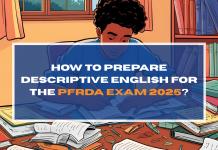In Part One of Bank and its classification, Unorganized Banking and few topics of Organized banking has been explained. In today’s article, the rest of the topics of Organized banking will be covered in detail. Types of Banks and its classification topic is extremely important in the Banking awareness section and few questions from this topic can be expected in the upcoming banking exams like SBI Clerk, RBI Assistant AND NABARD Grade A. Let’s start Co-operative Banks.
Co-operative Banks:
Co-operative Bank is a financial institution founded on a co-operative basis and to deal with banking services. Just like commercial banks, it deposits cash and advance loans to the customers. Co-operative banks more inclined towards rural societies and it provides financial assistance for rural and agricultural activates.
Structure of Co-operative Banks:
The structure of Co-operative Banks is classified in two ways. Agricultural credit institutions and Non-Agricultural credit institutions. Most of the co-operative structure is dominated by agricultural credit institutions. The overall structure of the Co-operative banks is Federal in nature. It is explained in the diagram below:

Land Development Banks:
To cater to the long term credit needs of the farmers and to assist them with the loans supporting moderate interest rates, the Government of India started the land Mortgage banks known as Land Development Banks. It was set up during the 1920s but the progress of this bank is slow. The progress that has been gained through these banks are mostly to South India that too in few states. For example Andhra Pradesh, Karnataka, Tamil Nadu, Gujarat, and Maharashtra. There are two types of Development banks as shown in the diagram below:

Under Organized banking, there are other Banks that contribute to the economy of the country. Let’s talk about the rest of them in detail:
National Bank for Agriculture and Rural Development (NABARD):
On July 12, 1982, National Bank for Agriculture and Rural Development (NABARD) was founded by the Government of India under Parliament Act –National Bank for Agriculture and Rural Development Act 1981. It was established on the recommendation of B.Sivaraman Committee with a focus on the rural sector. It replaced the Agricultural Credit Department and Rural Planning and Credit Cell (RPCC) of RBI.
The authorized share capital of NABARD is 500 crore and paid-up capital is 100 crores. The Paid-up Capital is contributed equally by the Government of India and RBI. The main objectives of NABARD are, to provide financial assistance to the Agricultural sector, to assist small scale industries, cottage industries and artisans, to gain overall development of rural sectors.
Export and Import Bank of India (EXIM) Bank:
The Export and Import Bank of India, also known as EXIM Bank was established on January 01, 1982. It is an apex financial institution in India for foreign and international trade. Export and Import Bank of India earlier was a branch of the IDBI but was made into an independent body with the growth of the foreign trade sector. The primary function of the Export and Import Bank of India is to provide financial assistance to the entities engaged in imports and exports of the country. It also supervises the work of other institutions occupied in the import and export sector. It aims is to promote foreign trade activities in the country.
Functions of EXIM Bank:
- It finances the import and export of goods and services from India and from countries outside India.
- It also provides financial assistance to bushiness joining a joint venture in a foreign country.
- It provides finance to the import and export of machines and machinery on lease.
- It offers short term loans or line of credit to foreign bank and governments
Small Industries Development Bank of India (SIDBI):
Small Industries Development Bank of India (SIDBI) was founded on April 02, 1990. It was initially incorporated as a wholly-owned subsidiary of Industrial development bank of India (IDBI). SIDBI was formed with an objective to aid the growth and development of micro small and medium-scale enterprises (MSME) in India. It’s headquartered in Lucknow. Mohammad Mustafa, a 1995 batch IAS Officer is the Chairman and Managing Director (CMD) of SIDBI. Prior to his appointment, he was ‘Joint Secretary’ in the Department of Financial Services (DFS) in the Finance Ministry.
Attempt 700+Free Full-Length Mock Tests
Also Read:
Banks and its classification (Part 1)
Women and child development schemes
Get Free Online Test Series, GK updates in form of Beepedia, BeeBooster, as well as latest updates for Bank PO, Bank Clerk, SSC, RBI, NABARD and Other Government Jobs.
займ без отказа онлайнзайм взятьзайм 50000 на карту














